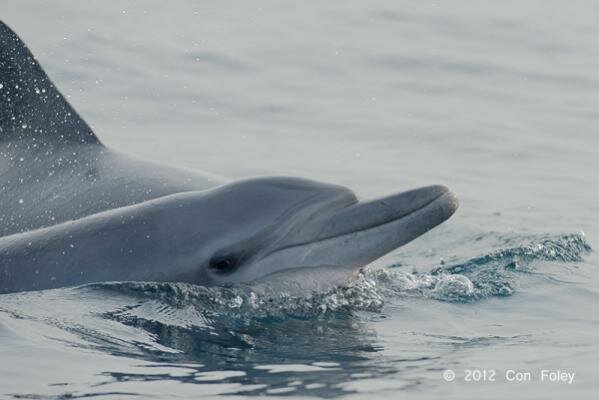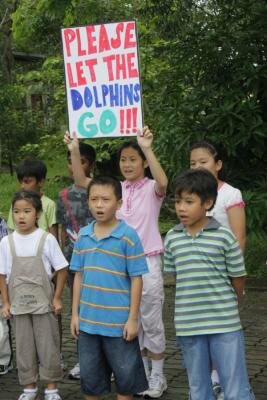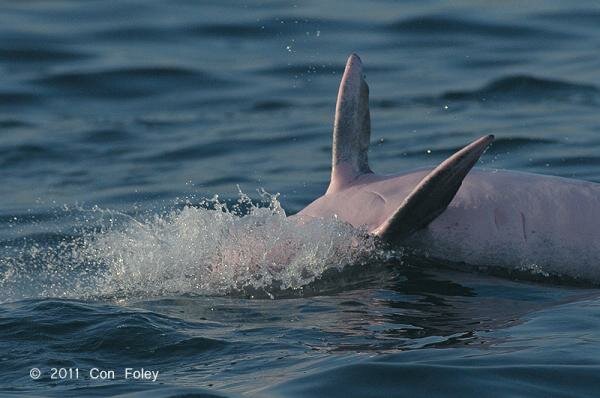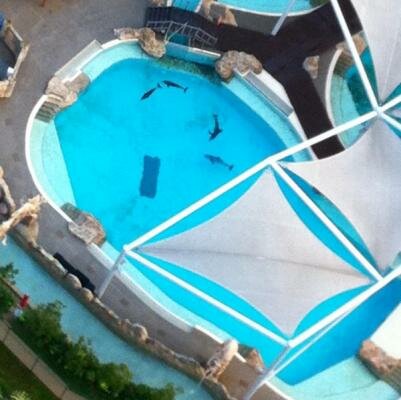Endear the Wild
To keep dolphins wild, is to keep dreams and aspirations alive.
In October last year, a local magazine asked me to write an op-ed about the wild-caught Solomon Island dolphins that were due to arrive at Resorts World Sentosa. The directive was to respond to some common arguments that were being aired by the public at that time. Unfortunately, this article was not published. The dolphins that are referred to in this article, presently reside at the aquarium at Singapore's Resorts World Sentosa. Though the debate is no longer a trend, I have decided to share this article now as I believe that the endeavor to keep these animals free is far from over, and that the issue remains relevant.
 Resorts World Sentosa (RWS) has attempted to justify that dolphins live better in captivity, and that the endeavor to include dolphins in their enterprise is a service toward marine conservation. Animal protection lobbyists contend that such ambitions deplete wild dolphin populations, exploit fishing communities, and only serve an “economic greed”. People in the community remain in a dilemma because while they agree that the trade in wild dolphins is cruel, they feel it is the only way our children will ever see a dolphin in real life.
Resorts World Sentosa (RWS) has attempted to justify that dolphins live better in captivity, and that the endeavor to include dolphins in their enterprise is a service toward marine conservation. Animal protection lobbyists contend that such ambitions deplete wild dolphin populations, exploit fishing communities, and only serve an “economic greed”. People in the community remain in a dilemma because while they agree that the trade in wild dolphins is cruel, they feel it is the only way our children will ever see a dolphin in real life.
 For our children’s sake
For our children’s sake
Children appear to enjoy going to dolphinariums because the carnival environment captivates and intrigues. I know this because I once was a child. When I was nine years old, I visited San Diego Sea World in California. My best memory was of the fun I had with my family outdoors. The dolphins swimming around in their pools hardly left an impression.
Conversely, when my dad bought me a book about “Killer whales in Alaska” I learned that Killer whales live in pods, feed on seals, and that they are actually dolphins. Through the book I travelled to amazing landscapes that the Killer whales lived in, and I told myself that one-day I would go to Alaska and see these animals. I have not been to Alaska, and I have not seen a Killer whale in the wild, but I continue to look forward to it, and I want to do what I can to enable the animals to remain in the wild, so that I can meet them there someday.
When we put animals in captivity for our convenient access, we sacrifice the potential for our children and future generations to meet these animals in the wild. If we want to teach our children to love and appreciate nature, and to develop a sense of wonder for the natural world, we can start right now, even before RWS brings the dolphins here, because there are already wild dolphins in Singapore.
Wild dolphins in Singapore
If Resorts World Sentosa really wanted to bring dolphins closer to you, they could launch an awareness campaign to tell you that there are wild dolphins in Singapore. Several world-class aquariums have already adopted this practice. The Monterey Bay Aquarium, New England Aquarium and the Aquarium of the Pacific, for example, offer boat trips to see these great animals in their natural habitat instead of in pools. Marine parks and aquariums can provide a greater service if they teach respect for nature through their own behavior, which would mean retiring these exploitive wild animal shows, and ending the capture or breeding of cetaceans into lifelong confinement.
Con Foley is an avid wildlife photographer in Singapore and has had several encounters with wild Indo-pacific bottlenose dolphins in the Singapore Straits. Visit his online gallery to see his photographs of these beautiful creatures in the wild waters of Singapore.
 A group of 12 persons can hire a boat for a three-hour wander out at sea for $37.50 per person (less than a ticket to Universal Studios that costs $66 for adults and $48 for children). As you travel out to sea, families get to learn about our national and natural history as they get a glimpse at the world’s busiest shipping hub, watch seabirds hunt for fish, or even meet a sea turtle as it surfaces to breathe. Such an authentic experience would garner awareness and resect for our natural heritage, enrich our minds to the elements of nature, and kindle a spirit of adventure. On the mainland, there are also opportunities to observe other wild animals in Singapore without spending a fortune. Wild river otters have been sighted in Kranji, Pasir Ris, Changi, Pulau Ubin and Woodlands.
A group of 12 persons can hire a boat for a three-hour wander out at sea for $37.50 per person (less than a ticket to Universal Studios that costs $66 for adults and $48 for children). As you travel out to sea, families get to learn about our national and natural history as they get a glimpse at the world’s busiest shipping hub, watch seabirds hunt for fish, or even meet a sea turtle as it surfaces to breathe. Such an authentic experience would garner awareness and resect for our natural heritage, enrich our minds to the elements of nature, and kindle a spirit of adventure. On the mainland, there are also opportunities to observe other wild animals in Singapore without spending a fortune. Wild river otters have been sighted in Kranji, Pasir Ris, Changi, Pulau Ubin and Woodlands.
Hidden Costs
Will you tell your children the story about how the dolphins were caught from the wild? And about how some of them died while they were shipped from the middle of the Pacific Ocean to the aquarium? Just how do we inspire a spirit of conservation and respect, when in the process of acquiring these dolphins we have done the very opposite? The demand for dolphins by dolphinariums is what drives the trade in dolphins. And when we pay to go to a dolphinarium, we directly condone this industry.
Some of us may feel that a dolphinarium is the only opportunity we have to see these animals, but have we even tried to look for them in the wild? When we tell our children (and ourselves) that the dolphinarim is where we go to see dolphins, we are telling them that there is no hope for the future, and that these animals that amaze us have no place left on our planet. Dolphinariums limit our understanding of the world and do not inspire a motivation to go outdoors and explore. If we want “Jane Goodalls” and “Sir David Attenboroughs” to emerge from our society, we do not need more animals in captivity we need more wild places. Wild places and the great outdoors is what makes great adventurers who will in turn inspire more generations of explorers, scientists and visionaries.
The cost of ambition is a social cost which we might not yet see, but it will be very expensive, or perhaps even impossible, to reestablish in the future. If we want to tell our children a story, let us tell them our story, about how we enabled these dolphins to remain free, and how we gave our children the opportunity to dream and explore.
Zoos and dolphinariums




 Debby Ng forayed into journalism following failed attempts at becoming a world-class equestrian. A wildlife crime investigator, underwater photographer, dive master and founder of a marine conservation organisation, she spends what remains of her time writing about the environment, its wildlife, and its people.
Debby Ng forayed into journalism following failed attempts at becoming a world-class equestrian. A wildlife crime investigator, underwater photographer, dive master and founder of a marine conservation organisation, she spends what remains of her time writing about the environment, its wildlife, and its people.













